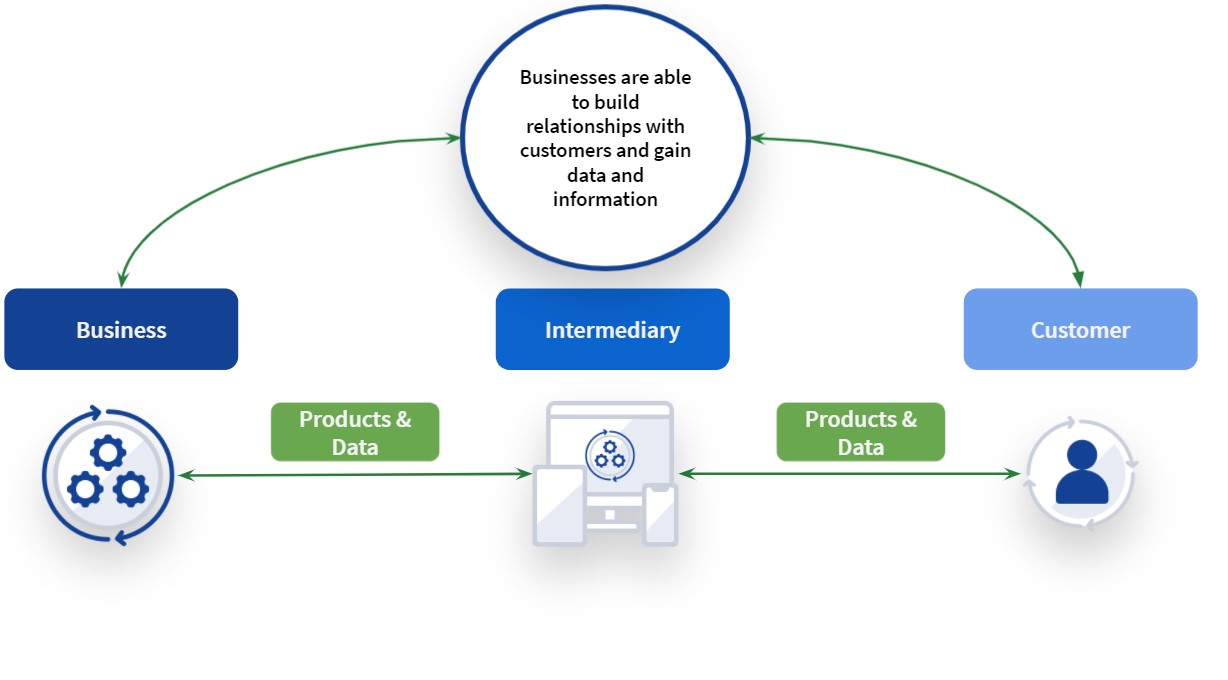When it comes to selling products, it’s traditionally gone that you can only choose to sell to other businesses or directly to customers.
But, technology has given way to more options where businesses can have both.
By serving both parties, businesses can have a win-win relationship with partners to have a 360-degree view of your customers, reduce operational costs, and grow revenue opportunities, while still retaining their own branding and pricing.
With a business-to-business-to-customer (B2B2C) model, businesses can reap these benefits; however, this can only happen if they have already embraced digital transformation.
What Does B2B2C Mean and Why Is It Important?
B2B2C is an e-commerce model where businesses access customers through another business but are able to interact directly with customers under their own brand.

B2B2C differs from a channel partnership in that customers are fully aware that they are buying from the business. However, this does not mean that the middle man is entirely cut out. Rather, both parties work together to serve the end customer, a win-win situation.
However, implementing a B2B2C business model will first require rethinking business processes in light of technology and end users: digital transformation.
Implementing B2B2C with Digital Transformation
Pursuing a B2B2C model is no simple feat.
In order to successfully enable B2B2C, organizations will need to embrace digital transformation first.
Here are 3 digital capabilities that are necessary to B2B2C implementation:
-
Integrate and Connect Different Systems and Applications
The very nature of a B2B2C business model will require different technologies and solutions to serve each respective party. But as businesses continue to add on these solutions, their tech stacks will only become a tangled mess that results in disjointed user experiences and wasted resources.These siloed technologies prevent businesses from achieving true digital transformation. In fact, according to Forrester, the number one technical challenge facing digital experience leaders is inadequate integration with back-end systems.
Businesses can tackle this roadblock to digital transformation and begin implementing the technologies needed to enable a B2B2C business model with a connective foundation that will allow them to connect their solutions.
-
Collect and Analyze Data Across Intermediaries and Customers
B2B2C success rests upon the flow of data and feedback from the business to their intermediaries to the customers and back. However, siloed systems and applications prevent this connectivity.This lack of unified data significantly impacts B2B2C success. After all, one of the major benefits of a B2B2C business model is the ability for businesses to gain access to customer data and information that a B2B company might not have been able to gather.
Additionally, not being able to collect and leverage data affects how well businesses can serve their intermediaries as they have no insights into production, inventory, or even satisfaction levels.
Again, with a unified platform, data can be easily collected across multiple solutions and leveraged to identify bottlenecks, target content based on partner needs, and personalize offers based on customer behavior.
-
Enhance Partner and Customer Experiences
Perhaps the most critical element of B2B2C success depends upon the business’ ability to serve both partners and customers effectively. It’s difficult enough to deliver excellent experiences to partners, and this challenge is exacerbated when end customers are added to the mix.But businesses that have embraced digital transformation are able to effectively leverage new functionality, such as personalization and self-service, to better serve their audiences.
However, keep in mind that the ability to enhance user experiences is highly dependent on the first two points we’ve covered. Without connected solutions or unified data, businesses will be unable to meet their partner or customers’ present and future needs.
Ultimately, B2B2C requires more than just selling to customers through intermediaries. Those who have successfully implemented a B2B2C business model are those that have invested in modernizing and transforming their business through technology.
Start with Successful Digital Transformation
Did you know that a whopping 70% of all digital transformations fail? Don’t be disheartened though, you can easily be a part of the minority if you walk into this complex process prepared. Download this e-book to learn how to avoid the 5 most common mistakes that lead to a failed digital transformation project.
Veja como você pode criar uma solução que atende às suas necessidades.
Recife, PE, 50.030-030
Tel: +55 81 2121-6000

